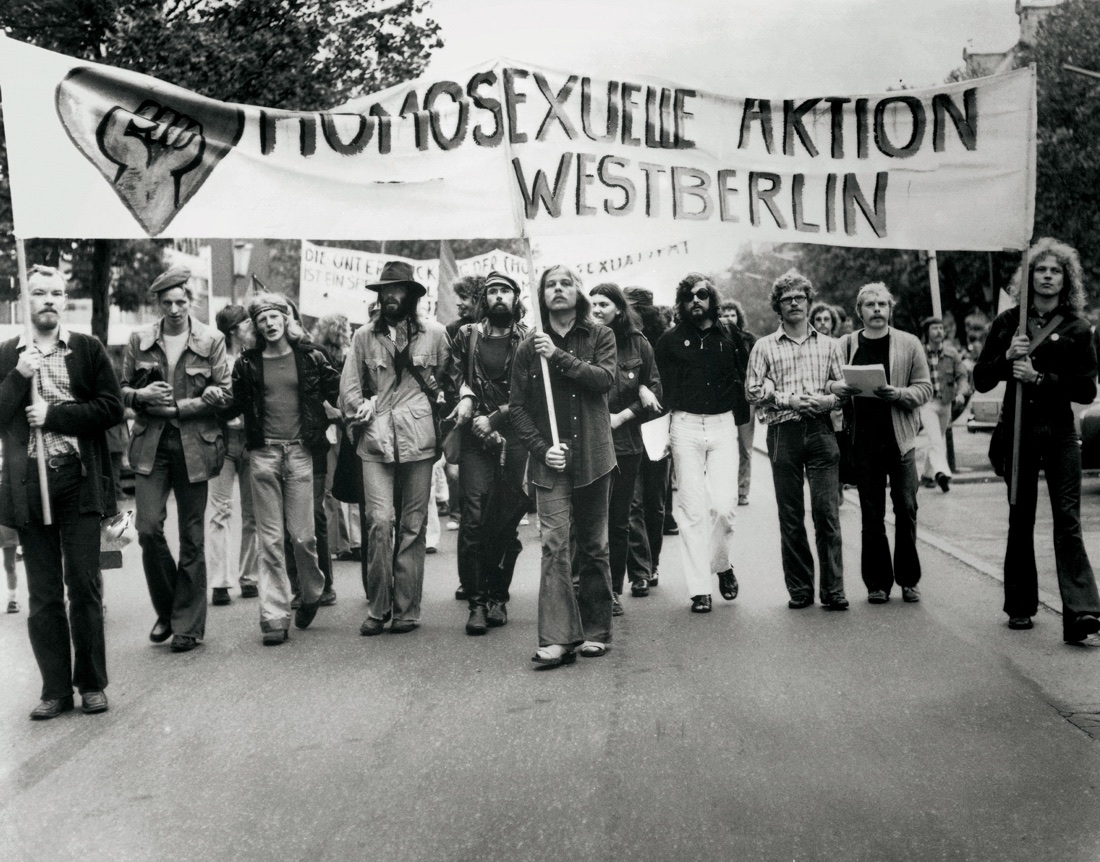How the Nazis Destroyed the First Gay Rights Movement


This article was originally published at The Conversation. The publication contributed the article to Live Science's Expert Voices: Op-Ed & Insights.
Very recently, Germany's Cabinet approved a bill that will expunge the convictions of tens of thousands of German men for "homosexual acts" under that country's anti-gay law known as "Paragraph 175." That law dates back to 1871, when modern Germany's first legal code was created.
It was repealed in 1994. But there was a serious movement to repeal the law in 1929 as part of a wider LGBTQ rights movement. That was just before the Nazis came to power, magnified the anti-gay law, then sought to annihilate gay and transgender Europeans.
The story of how close Germany – and much of Europe – came to liberating its LGBTQ people before violently reversing that trend under new authoritarian regimes is an object lesson showing that the history of LGBTQ rights is not a record of constant progress.
The first LGBTQ liberation movement
In the 1920s, Berlin had nearly 100 gay and lesbian bars or cafes. Vienna had about a dozen gay cafes, clubs and bookstores. In Paris, certain quarters were renowned for open displays of gay and trans nightlife. Even began depicting sympathetic gay characters. Protests were organized against offensive depictions of LGBTQ people in print or on stage. And media entrepreneurs realized there was a middle-class gay and trans readership to whom they could cater.
Partly driving this new era of tolerance were the doctors and scientists who started looking at homosexuality and "transvestism" (a word of that era that encompassed transgender people) as a natural characteristic with which some were born, and not a "derangement." The story of Lili Elbe and the first modern sex change, made famous in the recent film "The Danish Girl," reflected these trends.
For example, Berlin opened its Institute for Sexual Research in 1919, the place where the word "transsexual" was coined, and where people could receive counseling and other services. Its lead doctor, Magnus Hirschfeld, also consulted on the Lili Elbe sex change.
Get the world’s most fascinating discoveries delivered straight to your inbox.
Connected to this institute was an organization called the "Scientific-Humanitarian Committee." With the motto "justice through science," this group of scientists and LGBTQ people influencing a German parliamentary committee to recommend the repeal to the wider government in 1929.
The backlash
While these developments didn't mean the end of centuries of intolerance, the 1920s and early ‘30s certainly looked like the beginning of the end. On the other hand, the greater "out-ness" of gay and trans people provoked their opponents.
A French reporter, bemoaning the sight of uncloseted LGBTQ people in public, complained, "the contagion … is corrupting every milieu." The Berlin police grumbled that magazines aimed at gay men – which they called "attacked by young men hurling stink bombs. A Parisian town councilor in 1933 called it "a moral crisis" that gay people, known as "inverts" at that time, could be seen in public.
"Far be it from me to want to turn to fascism," the councilor said, "but all the same, we have to agree that in some things those regimes have sometimes done good… One day Hitler and Mussolini woke up and said, ‘Honestly, the scandal has gone on long enough' … And … the inverts … were chased out of Germany and Italy the very next day."
The ascent of Fascism
It's this willingness to make a blood sacrifice of minorities in exchange for "normalcy" or prosperity that has observers drawing uncomfortable comparisons between then and now.
In the 1930s, the Depression spread economic anxiety, while political fights in European parliaments tended to spill outside into actual street fights between Left and Right. Fascist parties offered Europeans a choice of stability at the price of democracy. Tolerance of minorities was destabilizing, they said. Expanding liberties gave "undesirable" people the liberty to undermine security and
The total number of Europeans arrested for being LGBTQ under fascism is impossible to know because of the lack of reliable records. But a conservative estimate is that there were many tens of thousands to one hundred thousand arrests during the war period alone.
Under these nightmare conditions, far more LGBTQ people in Europe painstakingly hid their genuine sexuality to avoid suspicion, experiments and pleasure even when they were not sentenced for "liquidation." One gay man attributed his survival to swapping his pink triangle for a red one – indicating he was merely a Communist. They were ostracized and tormented by their fellow inmates, too.
The looming danger of a backslide
This isn't 1930s Europe. And making superficial comparisons between then and now can only yield superficial conclusions.
But with new forms of authoritarianism entrenched and seeking to expand in Europe and beyond, it's worth thinking about the fate of Europe's LGBTQ community in the 1930s and ‘40s – a timely note from history as Germany approves same-sex marriage and on this first anniversary of Obergefell v. Hodges.
In 1929, Germany came close to erasing its anti-gay law, only to see it strengthened soon thereafter. Only now, after a gap of 88 years, are convictions under that law being annulled.
John Broich, Associate Professor, Case Western Reserve University
This article was originally published on The Conversation. Read the original article.


